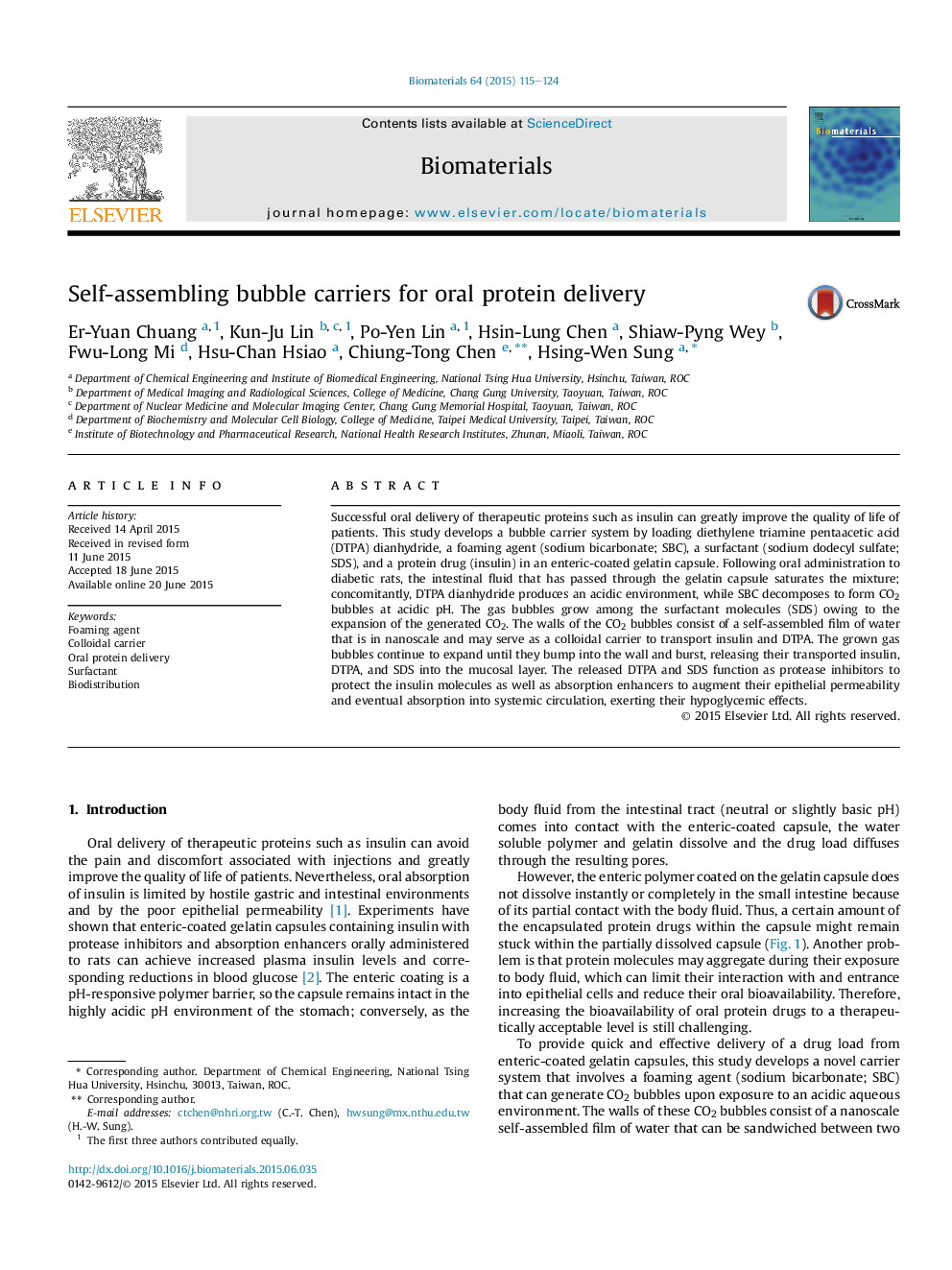| Article ID | Journal | Published Year | Pages | File Type |
|---|---|---|---|---|
| 5634 | Biomaterials | 2015 | 10 Pages |
Successful oral delivery of therapeutic proteins such as insulin can greatly improve the quality of life of patients. This study develops a bubble carrier system by loading diethylene triamine pentaacetic acid (DTPA) dianhydride, a foaming agent (sodium bicarbonate; SBC), a surfactant (sodium dodecyl sulfate; SDS), and a protein drug (insulin) in an enteric-coated gelatin capsule. Following oral administration to diabetic rats, the intestinal fluid that has passed through the gelatin capsule saturates the mixture; concomitantly, DTPA dianhydride produces an acidic environment, while SBC decomposes to form CO2 bubbles at acidic pH. The gas bubbles grow among the surfactant molecules (SDS) owing to the expansion of the generated CO2. The walls of the CO2 bubbles consist of a self-assembled film of water that is in nanoscale and may serve as a colloidal carrier to transport insulin and DTPA. The grown gas bubbles continue to expand until they bump into the wall and burst, releasing their transported insulin, DTPA, and SDS into the mucosal layer. The released DTPA and SDS function as protease inhibitors to protect the insulin molecules as well as absorption enhancers to augment their epithelial permeability and eventual absorption into systemic circulation, exerting their hypoglycemic effects.
